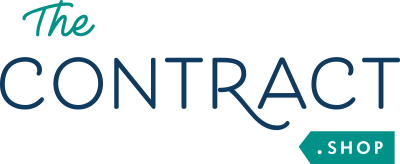Your Cart is Empty
Shop confidently - 14-day no-hassle return policy
Shop confidently - 14-day no-hassle return policy
Shop confidently - 14-day no-hassle return policy
According to a recent report, approximately 2.5 billion images are stolen daily, and nearly 64% of photographers have reported image theft more than 200 times.
The magnitude and repetitive nature of this crime show that prevention is the only way to keep professional images safe. The good news is that there are ways professional photographers can protect their work product, which we will explain here in more detail.
In addition to sharing their work online, photographers also share it with clients or other third parties. In these cases, many protect their images by setting up licensing agreements or photography contracts, such as the ones found at The Contract Shop, that specify how the image can be used. The terms of these agreements include:
One of the benefits of this protective measure is that contracts can be highly personalized. Photographers can tailor each agreement to suit the needs of different clients and projects.
You can learn more about these contracts in our posts on the four requirements for a valid photography contract and whether you can write one on your own.
Watermarking images is a go-to privacy measure for many professional photographers. They imprint a translucent logo or signature over the image to assert their ownership and keep anyone else from claiming it as their own.
You can create a watermark using a design tool like Canva or Photoshop and incorporate it into your images. Here are some of the best practices for watermarking:
Tools like Photoshop have made it incredibly easy to remove watermarks. Plus, for some photography niches (such as fashion), watermarking is not an appropriate technique.
This leads us to another common practice among professional photographers–invisible watermarking. This image-protection technique involves embedding a secret code or signature into an image before sharing it publicly.
Once you’ve uploaded the image with an invisible watermark, your watermarking software will help you track the secret code of your picture. It will notify you when anyone uploads the picture somewhere else without your permission.
Professional photographers also protect their work by placing a copyright notice at the top of their social media accounts or websites. The copyright notice simply declares ownership and makes it clear to your audience that no one can use your material without your permission.
For example, let’s say you have an Instagram account. You can simply include this line in your bio: ‘All images are subject to copyright’ or ‘Copyright © [Year] [Your Name].’
Similarly, you can run a disclaimer banner on your website that tells visitors that all your images are subject to copyright protection.
Professional photographers never post high-resolution files on the internet. They compress the image and purposefully lower its resolution before uploading it.
This is because low-resolution images look good on a screen, but they are not suitable for commercial use or printing. If someone wants to use their image for business purposes, they’ll have to contact the photographer and purchase the high-resolution version of the image.
Digital Rights Management (DRM) software makes it difficult for unauthenticated users to view or download your content. This is why many high-end professional photographers use it to protect their work.
The software requires users to authenticate themselves before accessing the protected data. It also demands a decryption key so that even if someone who isn’t authorized gains access, they cannot view or download the pictures. The software also allows content owners to decide things like which devices access the content and for how long.
It doesn’t matter if you are new to the business or a veteran photographer, you still need to protect your life’s work from being stolen. Theft of photography is a large-scale problem that can affect anyone.
For professional photography contracts that will make sure your work is safe, The Contract Shop® is here to help!
Kevin Gallagher is the CEO of The Contract Shop®, a contract template store for creative entrepreneurs, freelancers, coaches, and more. His background is in helping online businesses grow, having previously worked at Allbirds managing part of their operations. He is proud to report that his digital artist wife Mandy is a happy customer of The Contract Shop®, and his main motivation is to help as many people like her as possible with the tools that they need to confidently manage their businesses.
Comments will be approved before showing up.
